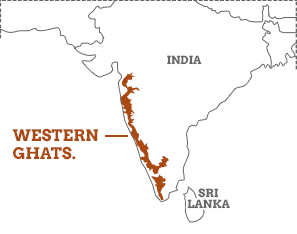“How do age structure and fertility rates impact population dynamics in developing countries?”
The Western Ghats, a mountain range running parallel to the western coast of India, significantly influence the region's climate and are recognized globally as a biodiversity hotspot. Stretching over 1,600 kilometers, the range impacts weather patterns and harbors an immense variety of flora and fauRead more
The Western Ghats, a mountain range running parallel to the western coast of India, significantly influence the region’s climate and are recognized globally as a biodiversity hotspot. Stretching over 1,600 kilometers, the range impacts weather patterns and harbors an immense variety of flora and fauna, underscoring its ecological importance.
Encompassing the states of Gujarat, Maharashtra, Goa, Karnataka, Kerala, and Tamil Nadu, the Western Ghats are a critical ecological treasure. Protecting this range is vital for maintaining India’s climatic stability and preserving its unparalleled biodiversity.
The Western Ghats play a crucial role in India’s climate by intercepting the southwest monsoon winds, causing heavy rainfall on the western slopes and creating a rain shadow effect on the eastern side. This rainfall supports lush evergreen forests and a variety of ecosystems, crucial for the water supply and agriculture in peninsular India. Additionally, the Ghats moderate temperatures, creating a cooler and more humid environment in the regions they traverse.
As a biodiversity hotspot, the Western Ghats are home to an extraordinary number of endemic species, with over 7,400 species of flowering plants, 139 mammal species, 508 bird species, 179 amphibian species, and numerous invertebrates. This rich biodiversity is attributed to the range’s diverse habitats, from tropical rainforests to montane forests, each supporting unique ecological communities. Conservation efforts are paramount due to threats from deforestation, habitat fragmentation, and climate change.
See less

Age Structure and Fertility Rates: Managing Demographic Change in Developing Nations Of all the demography characteristics, age and fertility influencing population development in developing nations are crucial factors. Age Structure: Youth Bulge: They are a resource that if given a large populationRead more
Age Structure and Fertility Rates: Managing Demographic Change in Developing Nations
Of all the demography characteristics, age and fertility influencing population development in developing nations are crucial factors.
Age Structure:
Youth Bulge: They are a resource that if given a large population of young people can cause fast overpopulation therefore a lot of demands on the available resources and development infrastructure.
-Aging Population: Few births you have correspond with higher level of dependency of the aged as people age thus implying a higher number of the aged and those who will be being supported by working population.
Demographic Dividend: The time when a majority of the population is in the working population. In such a case economic growth and development is possible if there is investment in education, health and employment.
Fertility Rates:
High Fertility Rates: Problem of providing basic needs such education, health and employment in areas of rapid population growth due to high fertility rates will arise.
One could slow the rate of growth of the population and leave it in its old age. It has advantages and disadvantages – on one hand less resources are being used, on the other hand – economic issues may arise.
It is influenced by fertility rate meaning it is associated with several effects that a country can go through on the social, economic and environmental front. For instance, high fertility population that happens within the youthful population may find it difficult to facilitate education and health facility while the aged people require much investment on the social security and health services.
See less